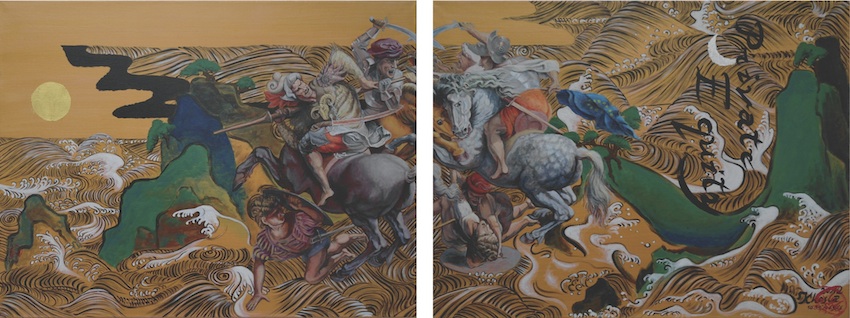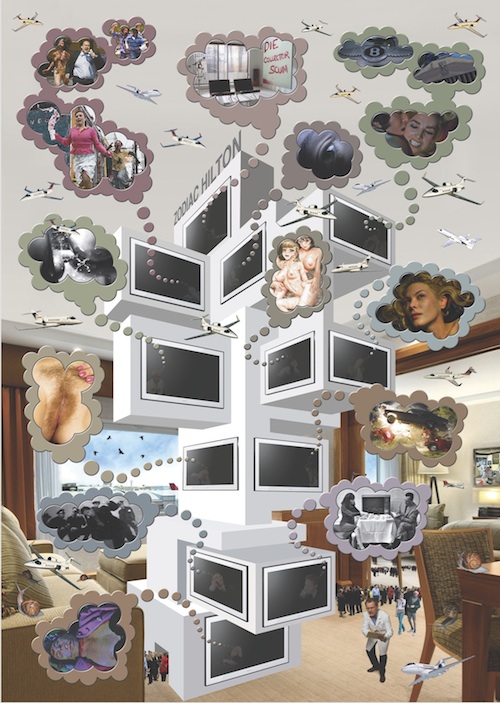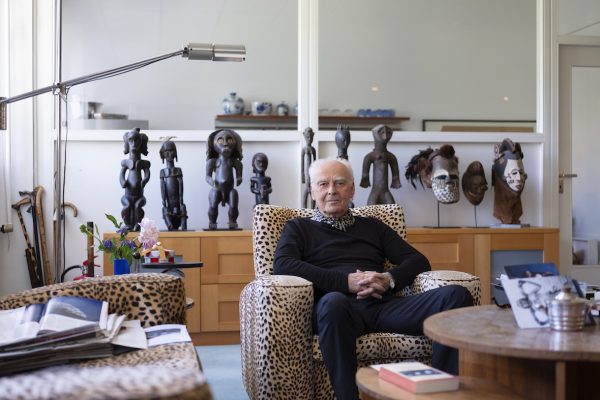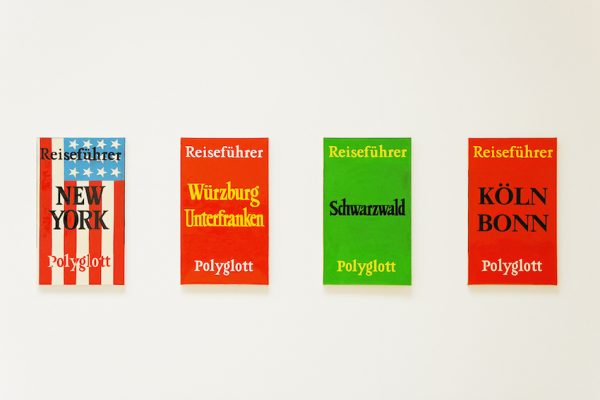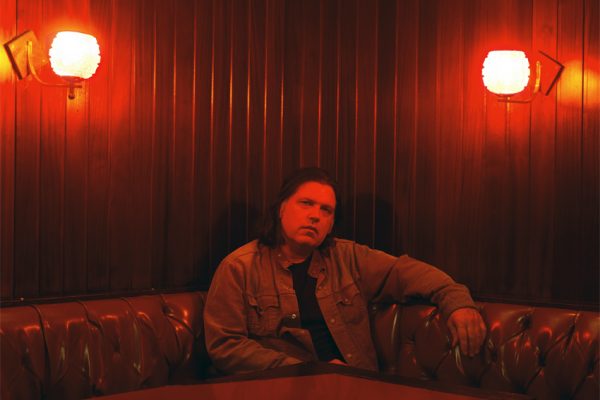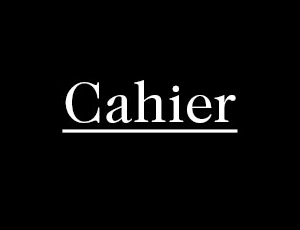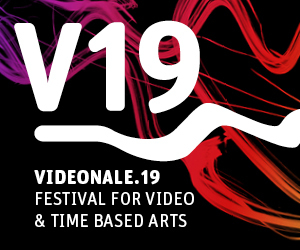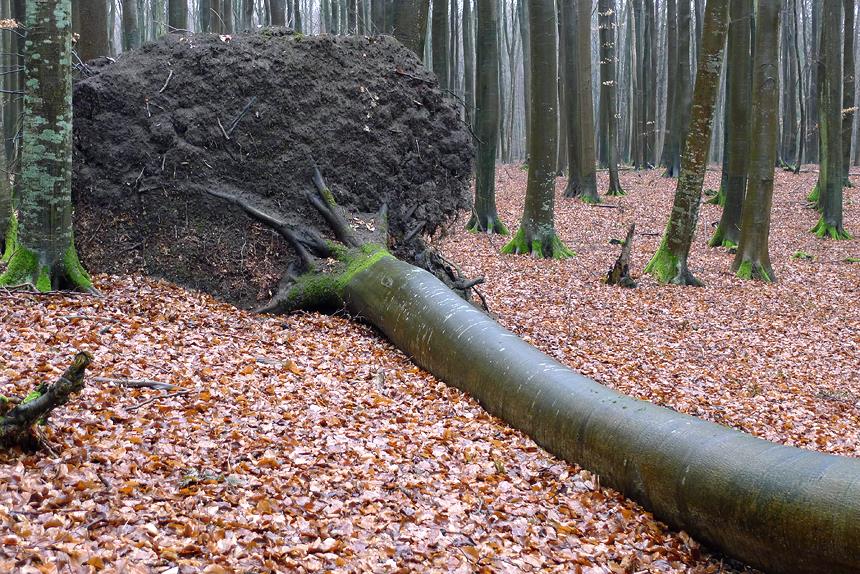
Besprechung
Kiron Khosla / Dan Mitchell
Mark von Schlegell on Kiron Khosla/Dan Mitchell „The House Husbands“ at Kunstwerk Cologne, until May 3rd
„I think the main target the young writer/artist should rebel against is himself or herself. Treat oneself as the enemy who needs to be provoked and subverted.“
-J.G. Ballard interviewed by Dan Mitchell and Simon Ford, Hard Mag no. 1, 2005.
According to a recent post by a writer on artforum.com, what distinguishes the city of Cologne from Berlin these days is a lack of possible art („a kind of silent agreement has set: Berlin got the bulk of the galleries, the artists, and the creativity, whereas Cologne is all about the fair, the institutions, collectors, and the money.“ *) We can complain about this kind of thing until the cows come home hamburgers. The fact is artists can do a lot more to resist their own death drive than they seem to remember is possible, even in Cologne where any success is gained against a backdrop of active hostility and evident cultural decay.
Case in point is „The House Husbands“ a two person show currently up at Kunstwerk Cologne, an exhibition of international resonance brought to you by artists only — without intervention of fountains of applied moneys and cultural influence. Defiantly tasteless, concerned with its own private history, for me it was the freshest art experience in a week that included a reputable and old-school institutional art fair, a global-scale Pierre Huyge production and various tasteful and therefore more disturbing expressions of globalist cultural capital.
Kunstwerk Cologne is a rare artist cooperative still managing a large number of studios across the Rhein from city center in Deutz. A committee of local artists manages an exhibition space and the curator for this month, Markus Saile, a young painter who went against the grain by moving to Cologne instead of Berlin two years ago, made the exemplary decision simply to give an older Cologne painter, Kiron Khosla — who after twenty-two years living in Cologne full-time and many more visiting, will move to Moscow in June — the opportunity to do anything he wanted.
Gesturing back to the spontaneous internationalism that once invigorated the scene when he first moved to the city, Khosla invited his old friend Londoner Dan Mitchell for a two-person show. Khosla and Mitchell started out associated with a group of artists centered around London’s St. Martin’s art school in the 90’s. If their work is esthetically more difficult than that of their contemporaries Merlin Carpenter, Josephine Pryde and Nils Norman, it shows similar resilience and long-term commitment to its own purposes. While Mitchell’s info-collages move out from a set of political associations shared with Carpenter and Norman, Khosla’s estheticized pop/classicist oil paintings engage traditional art with something of the surreal structuralist seriousness of Pryde. Khosla and Mitchell are on the far-ends of this spectrum, both producing work explicitly hostile to current fashion. Despite the fact their work is jarringly different (Mitchell’s printed loud art propaganda coming as the polar opposite of Khosla’s witty oils and brushes) one of the unusual things about the exhibition is that even as each shows themselves tending to extreme repetition and instantly identifiable style, each here discovers faces one might not have realized it had in the other. I would go so far as to suggest something of a pop psychedelia shows itself underlying their punk and dandy poses.
Never have Khosla’s hyper tasteful, painterly, postmodern paintings (familiar from various shows at Nagel in Cologne then Berlin) come across so light and contemporary as when intermingled with his chum’s photoshopped epiphanies of consumerist desire and crudity. In the multiplicity of Khosla’s compositions, we begin to notice the modernism within their classicist post-structuralism: the moon and the sun informing/supporting every possible composition, quotations from east mingling with images of the west, etc. Among works so self-centered as art, Mitchell’s acerbic, obscene line-crossings — as well as the tennis-balls fired out by his concealed cannon enter the room with the — take on dignity and wield some of the old transformative forces of minimalism and the grid without betraying their slacker humor.
Khosla’s markings suggest a graffiti that networks all works of art in différance. Private puns and literary obsessions (P. G. Wodehouse, Giles Deleuze) spill into or onto the panel without forcing themselves — just as Mitchell’s gutter-mouthed slogans disappear into consumerist images they occupy. Writing comes explicitly to the fore in Mitchell’s almost impossibly vulgar Hard Mag (designed, printed and issued in the exact format of cheap 90s London porn) — here revealed not as an intrusion of porn into art, but vice versa. Issue 1 begins with an interview with J. G. Ballard resonant enough today to send chills up thin reader’s spine. Elsewhere, in the show’s Zodiac Hilton Poster collage Mitchell can be seen impersonating Ballard’s Doctor Vaughn, the creepy angel of Crash (1973) — a role he received explicit permission from the author to perform.
„The House Husbands“ is not a descriptive title. Rather, as both these male, self-involved Gen X „geniuses“ have gone so far as to have committed to the life of the artist (a role that for their generation of Londoners has led to danger, decadences and exile) they seem to have felt it proper to call attention to their own bold proto-feminist, anti-capitalist, non-violent esthetically concerned resiliency as a possible, if even inevitable sitcom. Hence not only the catalog text cribbed from George Melly (TV’s exemplary Englishman who had to discover heterosexuality when he was out of college), but the tennis ball heading now towards your head.
For this moment anyway, art survives alive with wit and honesty intact. If the show had something of the feel of a middle finger raised to contemporary culture games occurring at the Art Fair and in the wider, ever-accelerating International scene, perhaps it was because of what’s happening just across the alley. It’s an appropriately dismal backdrop to the temporary rage and wit of this rare, once-in-two-lifetimes exhibition. Despite protest, locally-beloved Gebäude 9, Cologne’s storied rock club, is being forced to close by unchecked Landlordism.
* Kito Nedo, „Form And Function: Cologne.“ Artforum 21/04/14. http://artforum.com/diary/id=46288


